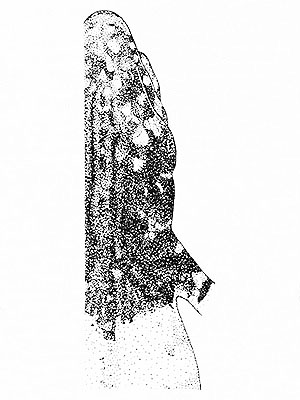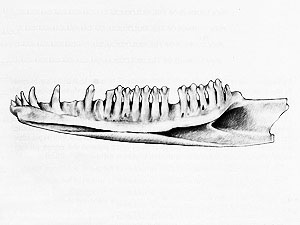This somewhat enigmatic form is known from at least one subfossil frontal bone that differed from the other frontal bones by its well-developed rugosities while being of comparable size to other frontal bones from other deposits.
These frontal bones are not really assignable to either the named species (Leiocephalus jamaicensis Etheridge) or to the second, unnamed one because they were found unassociated to other remains. [1]
*********************
References:
[1] Gregory K. Pregill: Systematics of the West Indian Lizard Genus Leiocephalus (Squamata: Iguania: Tropiduridae). Miscellaneous Publications of the Museum of Natural History, University of Kansas 84: 1-69. 1992
*********************
edited: 07.09.2019


